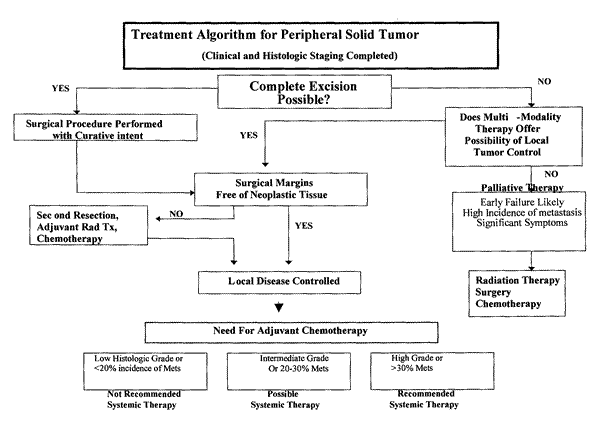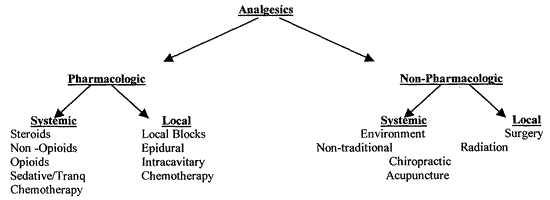 |
|
|
|
Palliative Care in Companion Animal Oncology
Rodney L. Page MS, DVM: Diplomate ACVIM (Internal Medicine, Oncology)
College of Veterinary Medicine, Cornell University
The world health organization defines palliative care as "The active total care of patients whose disease is not responsive to curative treatment. Control of pain, of other symptoms, and of psychological, social and spiritual problems, is paramount. The goal of palliative care is achievement of the best quality of life for patients and their families". The goals of veterinary oncology and palliative care have always been well aligned since quality of life has been the overriding concern for animals undergoing cancer treatment. Approximately half of all animals with cancer will die as a result of the disease and most will require symptom or pain control. The need for palliative care in veterinary oncology is already great but will likely continue to increase as the field better defines the indications for curative and palliative therapy and recognizes that some aspects of palliative care can be integrated into curative therapies in order to create a continuum of cancer management. For purposes of discussion, the definition of curative therapy will be median control of the primary and any metastatic disease for at least one year with conventional therapy for a given tumor type. Patients with tumors that cannot be controlled for this arbitrary enpoint may be considered eligible for palliative treatment. However, the need for palliative intervention and the type of intervention used is of great debate. The ease of prescribing palliative treatments may restrict future therapies or hinder progress toward a curative treatment. The concept of palliative care in both human and veterinary oncology is in need of rigorous study. The figure below illustrates a treatment decision algorithm based on the concept of curative vs. palliative primary control.
|
Primary Palliative Therapy
Primary therapy for palliative purposes is accomplished in order to control a variety of symptoms. Symptoms associated with advanced cancers includes physical disruption of vegetative functions such as dysphasia, tenesmus, dysuria and, dyspnea and symptoms associated with metabolic or paraneoplastic sequelae to cancer such as anemia, cachexia, hypoglycemia or hypercalcemia. All of these may induce discomfort, anxiety or pain in addition to organic abnormalities. If symptoms are associated with physical presence of a mass it is generally assumed that reduction of the mass will improve both organic symptoms and pain associated with mass. Primary therapy for palliation includes surgery, chemotherapy and radiotherapy. The goals of primary therapy in a palliative setting are different than in a curative setting. Palliative surgical debulking is not intended to include large normal tissue margins. Palliative radiation therapy is a combination of doses associated with little acute normal tissue effects. Palliative chemotherapy is administered to attempt reduction or stabilization of nodules to improve quality of life. Supportive medications such as antibiotics, stool softeners, anti-emetics, and others are delivered to ease symptoms either with or without primary therapy. Supportive procedures that may be necessary include transfusions, thoracentesis, cystostomy tubes/valves, nutritional support via feeding tube, etc. Even multimodality therapy (surgery plus chemotherapy or palliative radiation plus chemotherapy) may be appropriate in certain instances. However, certain combinations are problematic - palliative radiation and surgery.
Pain Management
Pain can be defined as an unpleasant sensory or emotional experience associated with actual or anticipated tissue damage. Pain is the most feared complication of cancer in humans. Approximately 40% of human patients with cancer suffer from pain and 80% with advanced cancer have pain. Pain control in humans and animals has become a major clinical focus in the last 5 years. Pain recognition in animals requires close observation. Vocalization is a very late event for animals in response to pain. Physiologic changes in heart rate, respiratory rate and pupil size (mydriasis) are early signs. Postural signs such as reluctance to lie down and abdominal guarding are also early signs. Restlessness and a change from being interactive to reclusive may be noticeable as well. Pain can be categorized as either acute or chronic. Acute pain may accompany procedures such as surgery or irradiation. Local anesthetics, appropriate use of tranquilizers and pre-emptive pain management is generally sufficient. Chronic pain requires a more comprehensive approach, often involving a combination of pharmacologic and nonpharmcologic analgesic strategies.
|
Primary treatment of the tumor can cause a direct reduction in pain even if the tumor does not respond by reduction in volume. The analgesic effectiveness of radiation therapy is well documented in the treatment of bone pain, metastases and CNS neoplasia. In humans, irradiation of peripheral nerves for perineal pain and hepatic irradiation (2,000-3,000cGy) for capsular distention is effective and well tolerated. The effect of primary chemotherapy on cancer pain is most often observed when treatment is associated with reduction in tumor size. Surgery can relieve pain and discomfort from problems such as absessed or ulcerated superficial masses, GI obstruction, CNS compression and unstable boney structures. The benefits of primary therapy should be weighed against the risks, hospitalization, recovery time and expected duration of benefit.
Use of specific analgesic agents is frequent for patients with cancer-related pain. Glucocorticosteroids have been used generously for animals with cancer in hopes of increasing appetite, mood and well being. Specific painful conditions associated with tumors that are known to respond to steroids include: raised intracranial pressure, acute spinal cord compression, metastatic bone pain, neuropathic pain due to infiltration or compression by tumor, symptomatic lymphedema, and hepatic capsular distention. Non-Opioid analgesics are usually the first line of management in humans. Escalation of the dose to determine analgesic activity to approximately 2X the normal dose is considered the maximum. Nonsteroidals such as carprofen and piroxicam (0.3 mg/kg pl q 24 hrs) are generally the initial drugs of choice in this category. If insufficient analgesia is achieved with non-opioids an oral form of opioid is often used and is most often combined with Tylenol (Tylenol 4 with 60 mg codeine dosed at 1-2 mg/kg po tid-qid, based on the codeine component) . In cats, oral butorphanol (0.2-1.0 mg/cat po BID-QID) may be used as single therapy. Morphine tablets or morphine suppositories may also be used. Transdermal fentanyl administration has been very useful for both pre-emptive pain relief and ongoing pain relief from chronic pain. Companion animals are rarely sustained on long-term opioid narcotics for chronic pain. Many alternatives exist now for administration of pain medication in humans for prolonged periods such as indwelling SQ ports, implants, etc. In some situations prolonged pain control in dogs or cats may be indicated.
Acupuncture, chiropractic management and physical therapy may be incorporated into pharmacologic management of pain to enhance overall well being.
|
|

Copyright ACVC


